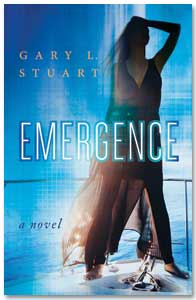Well, the first ethical imperative of a short story is precisely that—it must be short. Short as a Lilliputian.[1] The adjective is shorter. Having little length. The adverb is abruptly, suddenly. For writers like me, deficient or lacking comes quickly to mind. An educated way of saying short is diminutive. To make fun of it, say scanty or skimpy. If you are short-headed, your doctor might say you’re brachycephalic. Short-tempered is cranky and shorts just above the knee are made in Bermuda, or China.
Madame Wiki says a short story is a piece of prose fiction that typically can be read in one sitting and focuses on a self-contained incident or series of linked incidents, to evoke a single effect or mood.[2] Disclaimer—I’m not a fan. I write long form because it takes too much time to write short. I don’t read stories that only last one sitting and I can’t write content that evokes just one mood. However, some of the best writers who ever lived spent their entire careers writing short stories. It’s definitely an acquired skill.
Writing teachers and schools recommend short stories—at first—because it’s faster, involves less investment, and is less stressful. For some, the downside is not getting to the novel soon enough, not investing enough, and more stressful. Experts on the genre say every short story must have five key elements—setting, conflict, character, plot, and theme.[3] I suppose that’s true since it’s what novels require. Does that make short stories short novels? Is there such a thing as a short novel? Hopefully not.
The strength in writing short stories is being concise. For me, conciseness begets incompleteness. It requires cutting all my little darlings out, when one or two would expand the reader’s understanding. And it calls for pithiness rather than fullness.
Because short stories are fiction, the same long-form ethical norms apply—originality, plausibility, plagiarism, libel, and freedom of speech. Ethical short story writers, like novelists should write in a way that does no harm. They should tiptoe around using pseudonyms. For extra ethics points, avoid salacious or idiotic language.
Beside the ethics of writing short stories, their inherent value as morality teachers and doubters is a gift from writer to reader. There are thousands of short stories in the English langue to choose from, but the following gained worldwide acclaim because they stand for life, death, and inconvenient truths about both.
“The Tell-Tale Heart” Edgar Allan Poe (1843). Poe’s early stream-of-consciousness horror story, unreliable narrator and heart beating under the floorboards and all, is one of the most adapted—and even more often referenced—short stories in popular culture, and which might be the source for the hundreds of stories in which a character is tormented by a sound only they can hear.[4]
“Bartleby, the Scrivener” Herman Melville, (1853). The narrator of “Bartleby the Scrivener” is the Lawyer, who runs a law practice on Wall Street in New York. The Lawyer begins by noting that he is an “elderly man,” and that his profession has brought him “into more than ordinary contact with what would seem an interesting and somewhat singular set of men the law-copyists, or scriveners.” While the Lawyer knows many interesting stories of such scriveners, he bypasses them all for telling the story of Bartleby, whom he finds to be the most interesting of all the scriveners. Bartleby is, according to the Lawyer, “one of those beings of whom nothing is ascertainable, except from the original sources, and, in his case, those were very small.”[5]
“An Occurrence at Owl Creek Bridge” Ambrose Bierce (1890). Described as “one of the most famous and frequently anthologized stories in American literature”, it was originally published by The San Francisco Examiner on July 13, 1890, and was first collected in Bierce’s book, Tales of Soldiers and Civilians (1891). The story, which is set during the American Civil War, is known for its irregular time sequence and twist ending. Bierce’s abandonment of strict linear narration in favor of the internal mind of the protagonist is an early example of the stream of consciousness narrative mode.[6]
“Big Two-Hearted River” Ernest Hemingway (1925). Despite being rather low on action – a war veteran walks into the countryside, looks at some nice fish, puts up his tent and sleeps. It is in some ways the purest expression of Hemingway’s famous and much-imitated writing style. Nick Adams, his recurring protagonist, is trying to heal himself using the twin powers of solitude and nature. The patient reader can join him.[7]
“Symbols and Signs” Vladimir Nabokov (1948). Written long before Vladimir Nabokov hit the big time with Lolita and Pale Fire, ‘Signs and Symbols’ is haunting in its story of an elderly couple visiting their son at a sanatorium. All the hallmarks of his incredible gift for language are firmly in place.[8]
“Three-Ten to Yuma” Elmore Leonard. (1953). His short story was first published in Dime Western Magazine, a 1950s pulp magazine, in March 1953. It is one of the very few Western stories adapted to the screen twice, in 1957 and in 2007.[9]
“Going to Meet the Man” James Baldwin (1965). Set in the American deep south at the height of the Civil Rights movement, Baldwin’s famous short story examines racial tension from both sides of the coin without denying either their humanity. It is also an unflinching look at the horrors of violence and discrimination.[10]
“Cat Person” Kristen Roupenian.(2017). A recent short story that broke the internet. It may have been the only New Yorker story that thousands of people have ever read. The BBC described the short story as “being shared widely online as social media users discuss how much it relates to modern day dating.”[11]
Cutting to the chase, short stories allow writers to tell stories with a message without breaking the sweat of a full-throated novel. The end product is more accessible to a wider range of readers. They teach ethics quicker. Give ‘em a try.
[1] The word Lilliputian comes from Jonathan Swift’s 1726 novel, Gulliver’s Travels. Lilliput is the name of a fictional island whose people, the Lilliputians, stand only about six inches high. His book was not a short story.
[2] https://en.wikipedia.org/wiki/Short_story
[3] https://users.aber.ac.uk/jpm/ellsa/ellsa_elements.html
[4] https://lithub.com/43-of-the-most-iconic-short-stories-in-the-english-language/
[5] https://www.sparknotes.com/lit/melvillestories/section1/
[6] https://www.owleyes.org/text/occurrence-owl-creek-bridge/read/i#root-75217-2
[7] https://www.penguin.co.uk/articles/2019/short-stories-everyone-should-read.html
[8] https://www.penguin.co.uk/articles/2019/short-stories-everyone-should-read.html
[9] https://en.wikipedia.org/wiki/Three-Ten_to_Yuma
[10] https://www.penguin.co.uk/articles/2019/short-stories-everyone-should-read.html
[11] https://lithub.com/43-of-the-most-iconic-short-stories-in-the-english-language/ See also, https://en.wikipedia.org/wiki/Cat_Person

I am an author and a part-time lawyer with a focus on ethics and professional discipline. I teach creative writing and ethics to law students at Arizona State University. Read my bio.
If you have an important story you want told, you can commission me to write it for you. Learn how.






 I am an author and a part-time lawyer with a focus on ethics and professional discipline. I teach creative writing and ethics to law students at Arizona State University.
I am an author and a part-time lawyer with a focus on ethics and professional discipline. I teach creative writing and ethics to law students at Arizona State University.  My latest novel is Emergence, the sequel to Let’s Disappear.
My latest novel is Emergence, the sequel to Let’s Disappear.  If you have an important story you want told, you can commission me to write it for you.
If you have an important story you want told, you can commission me to write it for you.